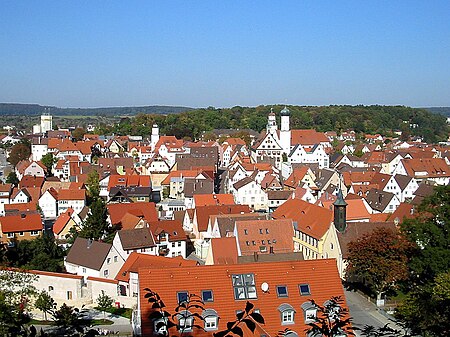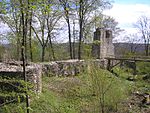Giengen

Giengen (German pronunciation: [ˈɡɪŋən] ; full name: Giengen an der Brenz; Swabian: Gẽänge) is a former Free Imperial City in eastern Baden-Württemberg near the border with Bavaria in southern Germany. The town is located in the district of Heidenheim at the eastern edge of the Swabian Alb, about 30 kilometers northeast of Ulm on the Brenz River. Giengen is the hometown of the Margarete Steiff corporation, who invented the teddy bear. Positioned on the Nuremberg-Ulm-Constance route, one of the main feeder routes of the Compostella Trail, Giengen is visited each year by an increasing number of walking pilgrims on their way to Santiago de Compostella.
Excerpt from the Wikipedia article Giengen (License: CC BY-SA 3.0, Authors, Images).Giengen
Kirchplatz, Verwaltungsgemeinschaft Giengen an der Brenz
Geographical coordinates (GPS) Address Website Nearby Places Show on map
Geographical coordinates (GPS)
| Latitude | Longitude |
|---|---|
| N 48.621666666667 ° | E 10.245 ° |
Address
Stadtkirche
Kirchplatz 1
89537 Verwaltungsgemeinschaft Giengen an der Brenz
Baden-Württemberg, Germany
Open on Google Maps











